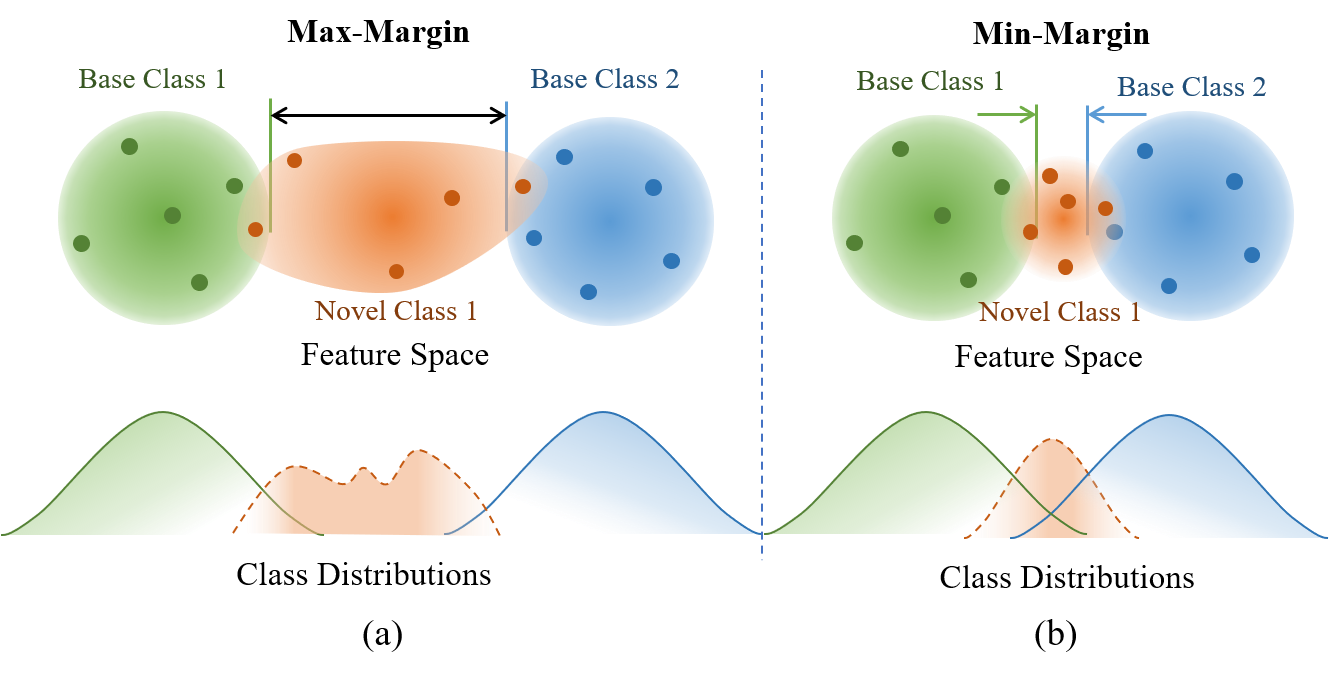Beyond Max-Margin: Class Margin Equilibrium for Few-shot Object Detection
Few-shot object detection has made substantial progressby representing novel class objects using the feature representation learned upon a set of base class objects. However,an implicit contradiction between novel class classification and representation is unfortunately ignored. On the one hand, to achieve accurate novel class classification, the distributions of either two base classes must be far away fromeach other (max-margin). On the other hand, to precisely represent novel classes, the distributions of base classes should be close to each other to reduce the intra-class distance of novel classes (min-margin). In this paper, we propose a class margin equilibrium (CME) approach, with the aim to optimize both feature space partition and novel class reconstruction in a systematic way. CME first converts the few-shot detection problem to the few-shot classification problem by using a fully connected layer to decouple localization features. CME then reserves adequate margin space for novel classes by introducing simple-yet-effective class margin loss during feature learning. Finally, CME pursues margin equilibrium by disturbing the features of novel class instances in an adversarial min-max fashion. Experiments on Pascal VOC and MS-COCO datasets show that CME significantly improves upon two baseline detectors (up to $3\sim 5\%$ in average), achieving state-of-the-art performance. Code is available at https://github.com/Bohao-Lee/CME .
PDF Abstract CVPR 2021 PDF CVPR 2021 Abstract





 MS COCO
MS COCO
